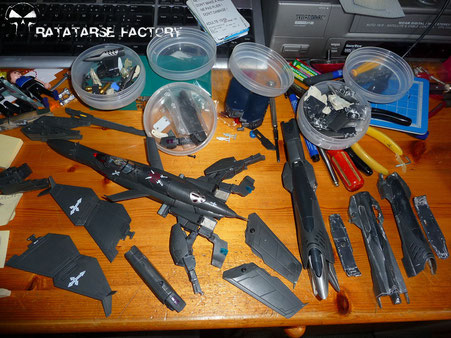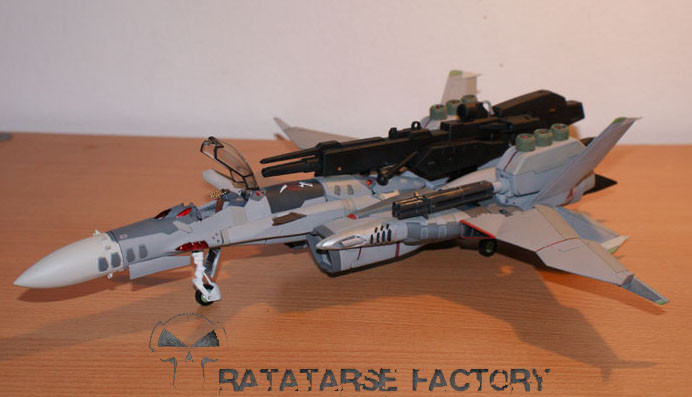- HOME
- ENEMY ENGAGED
- KAWAMORI Sensei WORKS
- Macross
- Fan Racer Rat's Edition
- Fan Racer : First Contact
- Fan Racer : Second Contact
- Fan Racer : Third Contact
- VF-1S Roy Focker TV
- VF-1A Max "Zentradi"
- VF-1D "Virgin Road"
- VF-1A TV MP Real Color
- VF-1A TV "Alaska U.N. Guard"
- VF-1A "Myria Fallina Genius"
- SF-3A Lancer II
- VF-1A Armored Episode 27
- VF-1A orange Episode 16
- Fan Liner
- SDF-1
- VF-1J SD
- Monster SD
- Phalanx SD
- Tomahawk SD
- Glaug SD
- Macross : DYRL
- Macross Zéro
- Macross Frontier
- Macross Plus / 7 / others
- Macross
- ARAMAKI Sensei WORKS
- TRANSFORMERS
- VIDEOGAMES
- OTHER ANIMES
- Jin-Roh
- Gally in egg
- Gally damaged
- Cobra
- Maetel
- Lagann & Simon
- Gurren Lagann
- Patlabor 1/35
- Patlabor 1/72
- Patlabor SD
- Dancouga SD
- GITS Alakuneda
- GITS Kenbishi HAW 206
- GITS Jigabashis
- GITS Marine Armsuit Type 303
- Apple Seed Briareos Landmate
- Jeeg Antares
- Getter 1
- Sakura Kinimoto
- Tetsuo's Throne (AKIRA) foam vers
- Tetsuo's Throne (AKIRA) Resin vers Ultra
- Captain Caveman
- Miyazaki 1/72
- Ptolemaios
- Harlock Space Wolves
- Clare (Claymore)
- Saint Seiya Customs
- YF-1R Jack Archer
- ARMOR
- CARS
- COMICS
- PLANES
- SCI-FI
- TV / MOVIES / MUSIC
- COMMISSIONNED
- SV-51Z/AS
- YF-0C "Marines"
- VF-1A "U.N. Guard"
- 3D Printed Fan Racer
- Zentradi Salan Scout
- GNU VF-22S
- YF-19 Rebuild
- VF-1S panel lining
- Gerwalk VF-1D
- YF-29 repair
- R-9A Arrowhead R-type
- Corgi 66' Batmobile
- Corgi F-14 Macross Zéro
- Arcadia 78 Battle Damaged
- Cosmowing Restoration
- "Ripley & Friends" USB Lighted base
- Sinon GK
- 12" Clone Wars Diorama
- Vespool Clone
- Tetsuo's Throne
- HT Iron Man Mk VI repair
- Coony
- LINKS
- REVIEWS & TUTORIALS
- SERVICE
- CONTACT
SV-51Z / AS
Custom on Yamato 1/60 SV-51 (08/2013)
Anti-U.N. answer to Reactive Armored VF-0S

The beginning of this mad project is just there :
Deisuki (again !) wanted to recast some parts of this 1/60 SV-51G (Ivanov Type) to make a custom...
BUT
Deisuki isn't a patient man, so he broke many of the parts without finding the screws.
So the SV came to my Nursery, where it was cured and rebuilt.
The resin leftovers on the parts had to be removed, too !
So he sent me the armament he wanted to put on, and the result is quite astonishing !
Before copying the description of the AS made by Deisuki himself, I will explain the big lines of this custom :
- Reverse the main wing of the SV-51G
- Create air intakes on the newly created apex
- Integrate full armament
- Keep the transformation process possible
- Paint must be a proto-like or low-vis like
Well, I think I'm in !
Description of the SV-51Z / AS by Deisuki :
The SV-51Zeta-AS is a
prototype that was recovered by the U.N. Spacy following a
joint operation against a major research complex of the Anti-U.N. Army.
Although it has never been put into operation, he was ready to
fight and should have entered the theater of operation under the
guidance of Major DD Ivanov a few days after the Anti-U.N. fall.
Ivanov had given him the nickname of "Armor Slayer" (AS).
The SV-51Z-AS was designed after the report of Major DD
Ivanov about the battle for the conquest of Afos1 and his combat with reactive-armor equipped VF-0S piloted by Roy Focker.
Greatly impressed by the protection and response of the Armored Zero,
anti-UN engineers focused on an improved version of the SV-51G specially
designed to destroy any new unit equipped with a reactive armor.
To do this, the Zeta was equipped with various weapon prototypes
designed for anti-armor combat.
The main armament is located under the fuselage: the EHCPC-1
(Extremely High-Compressed-Particle Canon type 1).
Its principle is quite simple, the gun generates a beam of particles sent with very high speed, the production of which is provided by a mini particle accelerator directly connected to the carrier aircraft engines.
To postpone this request, their power was greatly increased while
preserving the still-short flight range of the SV-51.
The particle accelerator is directly connected between the engines
and the EHCPC-1 cannon.
Each shot is developing a very powerful shot and has a penetration
force, capable of piercing a reinforced armor of several feet through an
active heat emission during the impact.
Unfortunately this gun requires extremely long load
time and can not be used in other mode than fighter mode, by the
dependence of the accelerator linked to the reactors.
This system will later be taken up and optimized (essentially due to the use of nuclear engines) on U.N. Spacy's fighters, debuting with the test
prototype VF-1T "Tiger 289" and will finally be integrated in the Strike packs.
For use in Battroid mode, this gun had to be connected to a power source with enough energy to supply the particle accelerator.
The gun can only be used in Battroid with an
auxiliary source of energy.
The Zeta AS had to be able to retreat very quickly and respond with
long distance shots to get enough time to reload the particle cannon.
To overcome this shortcoming, the Zeta AS has been equipped with a new experimental rifle with long range shooting capability, the HVS-1
(High Helocity Shotgun)
This rifle, unlike the EHCPC, can be used in amy transformation mode of the Zeta AS.
It fires aluminum-tungsten cartridges at extreme
speed, capable of perforating any shield before the onset
of the armor reactivity.
The Zeta AS also benefited of additional conventional weapons, such as the
two 180mm quad Gatling for close combat against conventional targets or to destruct a large amount of missiles (such as thos fired by the Armored VF-0S) .
The integrated decoy system is composed of 6 wide-fragmentation grenades, in the mounted nacelles boosters on the back of the fuselage
(elbows of the Battroid),if needed the Gatling acquisition system is
connected to the sighting system integrated in the HVS-1.
Ultimately, the onboard guns were fitted with 37 mm lengthened tubes for greater shooting accuracy.
Structurally, the Zeta AS has also been overhauled.
As this prototype is based on the SV-51 Gamma, some items had to be extensively modified like the wings
structure, now slightly inverted to increase low speed control and maneuverability.
In addition, apex air scoops on the main wings had to be added to help
cooling the particle cannon.
The head of the Zeta was also modified to accommodate a new targetting system
with very long range capacity and improved sensory receptors and avionics, which implied a change in the cockpit to increase
the stealthy ability of the Zeta AS.
































































